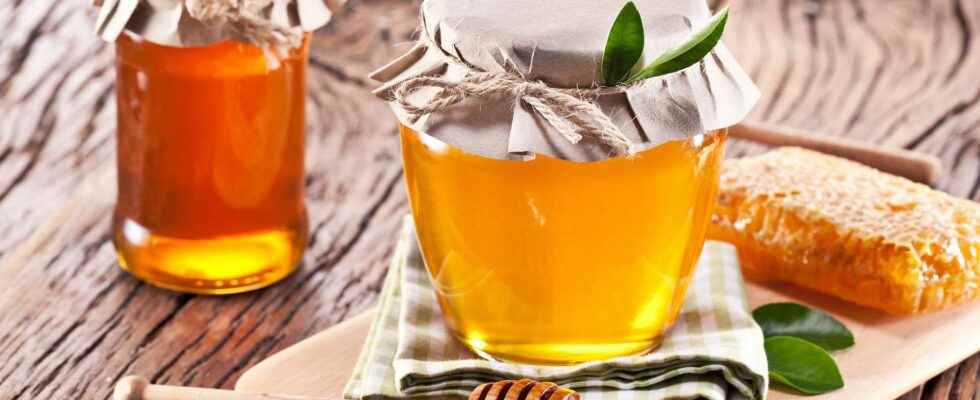Natural honey, produced by bees from nectar, has many benefits. However, we find in the combs processed honey made from glucose syrup or corn, containing starch or dyes. A fake honey which obviously does not have the same qualities as the real one. How to distinguish real honey from fake honey?
According to European directives, only the product of foraging for nectar by bees is entitled to the name “honey”. In reality, there are many cheap ersatz honey in stores, made from honey syrup. But, from cane to sugar mixtures of fructose, dextrins and maltodextrins. Some bees are also sometimes fed themselves on a basis of sugar syrup and not of flower nectar.
In 2016, a European study showed that 14.2% of honeys sold in the EU were non-compliant. However, these fake honeys are almost indistinguishable from theeye naked, especially since manufacturers add dyes and additives to make them look like natural honey. However, there are some clues that can put you on the trail.
Where does honey come from?
Since 1er September 2019, the law requires manufacturers to indicate the country of origin on the label. Honeys originating in China or Asian countries are particularly suspected of using glucose syrups to feed their bees or of “cutting” the honey with syrup. Warning ! EU origin is not a guarantee: ” Spain imported in 2014 more than 15,000 tonnes of honey from China, a large part of which was then sent back to Europe, and in particular to France. », Points out FranceAgriMer. Prefer honeys IGP or indicating a precise origin (region or country).
What ingredients in natural honey?
the honey can be monoclonal, polyfloral or derived from honeydew, like honey from fir. Usually, monofloral honeys indicate the name of the plant (acacia, lavender, lime tree, fir …) while polyfloral honeys indicate the region of origin (honey from Provence, honey from the Luberon, honey from the Alps …). In all cases, the composition must be exclusively 100% honey or a mixture of cold extracted honey (without heating or pasteurization). If other ingredients are indicated (flavors, preservatives, sugar or glucose syrup), it is not real honey.
Does honey crystallize?
When just harvested, natural honey is very liquid. Over time, it tends to naturally crystallize to form a mass solid and homogeneous. This process takes more or less time depending on the type of flower and the level of fructose and glucose, but it always ends up happening after two months to a year. Conversely, false honey always remains liquid or crystallizes in the form of layers or packages.
Is honey quickly absorbed?
Real honey settles to the bottom of a cup of water and tends to clump. It must be stirred well to mix it with the liquid, even hot. Processed honey has a higher moisture content and dissolves very easily. Likewise, natural honey deposited on a slice of bread is not absorbed, while fake honey quickly permeates the bread.
Does natural honey contain impurities?
A natural honey will always contain some impurities (particles of pollen, propolis, wax …). The color may vary from one pot to another depending on the season or the weather report, even for honey of the same origin. Honey made from sugar syrup has a texture perfectly smooth and homogeneous that remains stable over time.
Does honey smell good and taste long?
the real honey gives off a discreet fragrance reminiscent of the aroma of the flowers or the plant from which it is obtained. Its subtle taste disappears quickly and it is altered by the heat. The fake honey gives off an odor of sugar or caramel, and its taste remains in the mouth for a long time due to the strong presence of sugar and possible aromas.
Interested in what you just read?
Subscribe to the newsletter The health question of the week : our answer to a question you ask yourself (more or less secretly). All our newsletters
.
fs7
